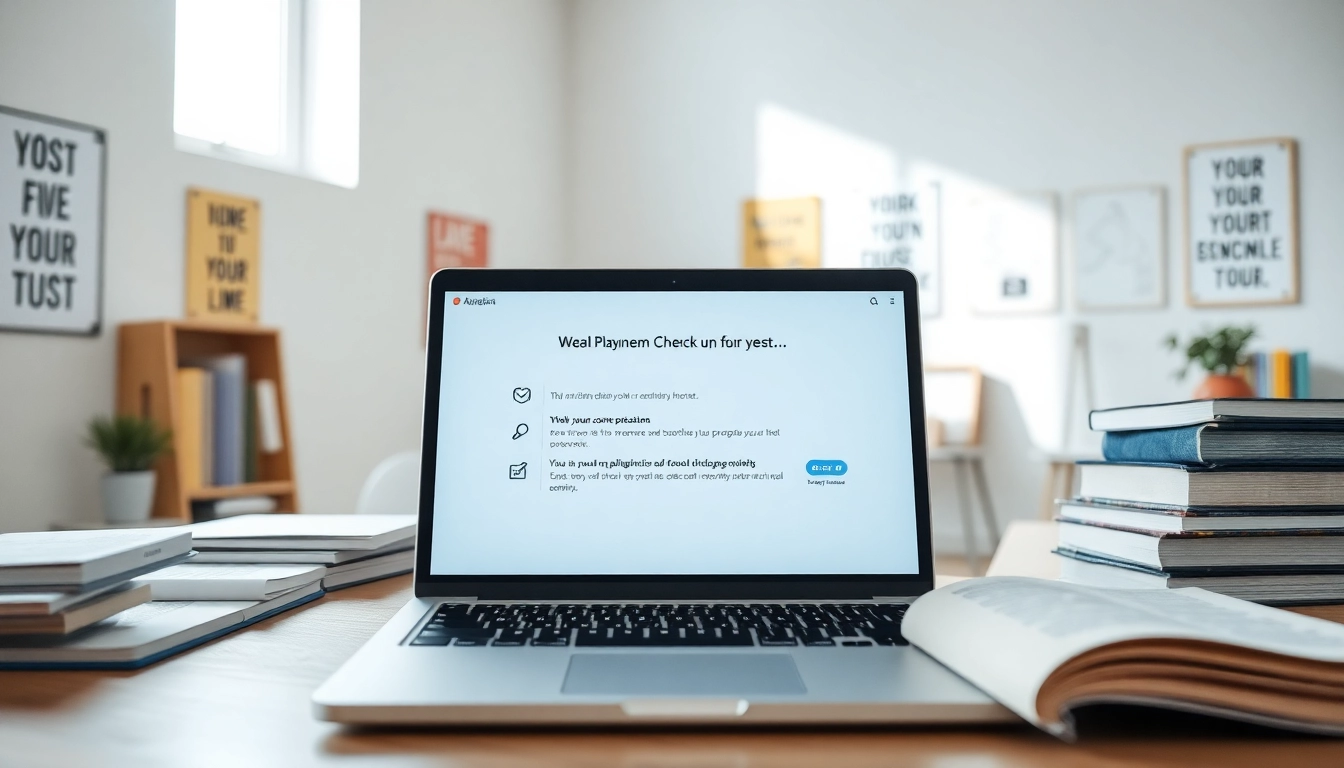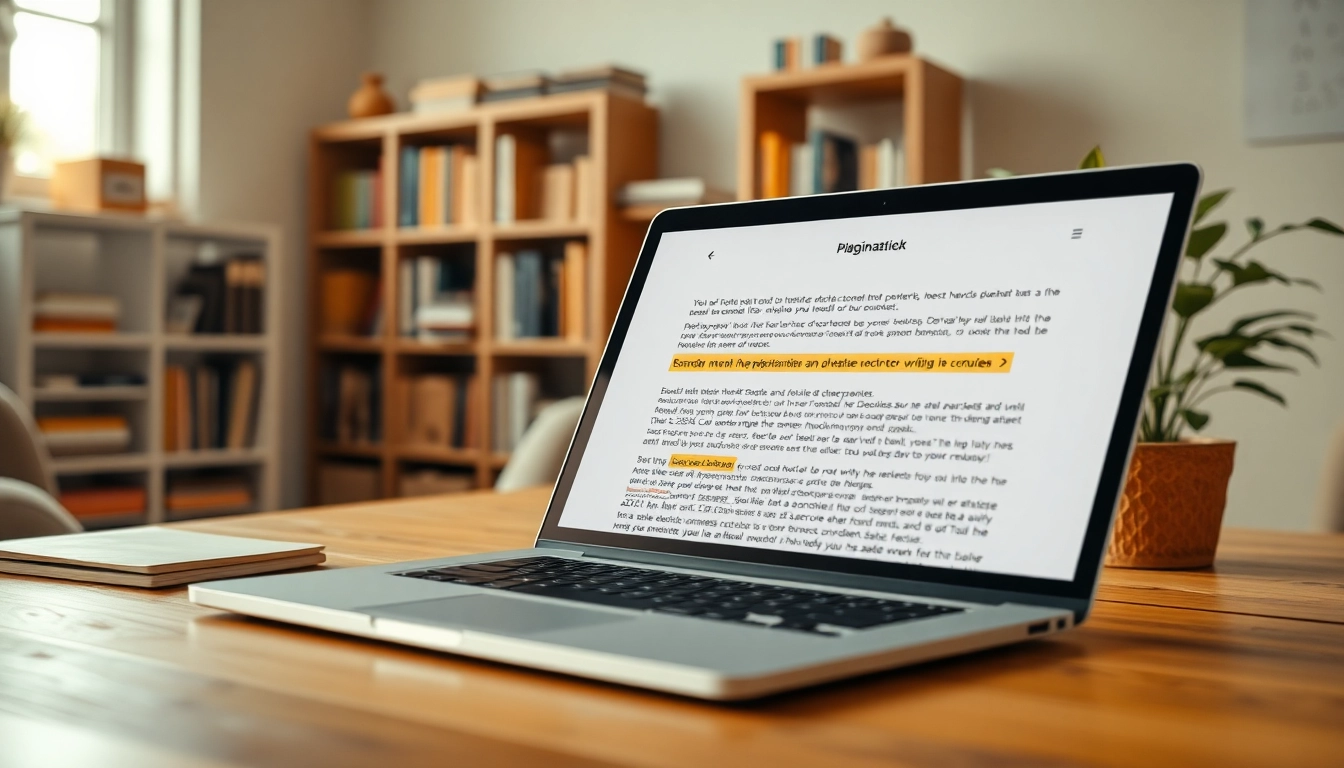Understanding Plagiarism Checkers
What is a Plagiarism Checker?
A plagiarism checker is a specialized tool designed to detect instances of plagiarism within written work. It compares the text against numerous online sources, academic papers, and previously submitted work to identify any similarity or duplication. Whether you are a student preparing a thesis, a journalist assembling a report, or an educator reviewing submissions, a plagiarism checker serves as an essential resource for maintaining academic integrity and ensuring originality in writing.
Plagiarism can occur both intentionally and unintentionally. With the advent of the digital age, the ease of accessing and copying information has dramatically increased, making plagiarism more prevalent. A reliable plagiarism checker provides the necessary tools to help individuals avoid this pitfall by scrutinizing their work before it is submitted or published.
How Does a Plagiarism Checker Work?
Plagiarism checkers utilize advanced algorithms to scan submitted text for matches against an extensive database of known sources. They function through several key processes:
- Text Analysis: The tool breaks down the content into manageable parts, analyzing sentence structure and word choice.
- Database Comparison: The checked text is then cross-referenced against millions of online data and publications to find similarities.
- Report Generation: After the analysis, the plagiarism checker produces a report indicating the percentage of text that matches other sources, along with links or references to the original content.
The efficiency of a plagiarism checker hinges on its database size, the sophistication of its algorithms, and its ability to detect slight modifications in wording that still constitute plagiarism.
Importance of Using a Plagiarism Checker
The significance of utilizing a plagiarism checker goes beyond merely avoiding legal repercussions. It plays a crucial role in fostering academic honesty and credibility in various fields.
- Maintaining Integrity: For students and academics, preserving one’s reputation hinges on producing authentic work. A plagiarism checker acts as a safety net, ensuring that all sources are adequately credited.
- Enhancing Quality: By identifying potential plagiarism, writers can address issues of originality, thus improving the quality and uniqueness of their work.
- Educational Tool: For educators, these tools serve as educational instruments to demonstrate the importance of originality and the proper citation of sources.
In a world where the boundaries of creativity are continuously tested, using a plagiarism checker is indispensable for safeguarding intellectual freedoms and promoting ethical writing practices.
Key Features of Effective Plagiarism Checkers
Real-Time Analysis and Feedback
Today’s plagiarism checkers offer real-time analysis, enabling users to receive immediate feedback during the writing process. This feature allows for:
- Instant Corrections: As users draft their work, they can identify possible plagiarism on-the-fly and make immediate corrections.
- Enhanced Workflow: Real-time analysis streamlines the writing process, encouraging more productive and engaging writing sessions.
This instantaneous feedback can significantly enhance the quality of the final output, allowing writers to produce polished work with minimal effort.
Multiple File Format Support
Effective plagiarism checkers support a variety of file formats. This versatility is crucial for accommodating different user needs. Common formats include:
- Word Documents (.doc, .docx)
- Plain Text Files (.txt)
- HTML Documents
The flexibility in file formats ensures that users across different domains—from educators to researchers—can easily access and utilize the plagiarism detection features without hindrance.
Comprehensive Originality Reports
A robust plagiarism checker provides comprehensive originality reports that detail the findings of the analysis. These reports typically include:
- Similarity Percentage: An overall percentage indicating how much of the text is similar to other works.
- Source Links: Direct links or citations to the original sources that contain matching text.
- Highlighted Matches: Visual indicators within the text that highlight sections flagged as plagiarized.
- Recommendations: Suggestions for how to revise flagged sections to ensure originality.
Such detailed reports not only serve to inform users but also offer educational insights into areas of improvement.
How to Choose the Right Plagiarism Checker
Evaluating Accuracy and Reliability
When selecting a plagiarism checker, accuracy and reliability are paramount. Users should consider the following criteria:
- Database Size: A larger database often correlates with higher detection rates and more comprehensive results. Ideal tools should cover not only online content but also academic journals and publications.
- Algorithm Sophistication: Advanced algorithms capable of detecting paraphrased text, not just direct copying, yield more reliable results.
- User Reviews: Examining feedback and reviews from current users can provide insights into the tool’s performance and reliability.
Reviewing User Experience
User experience is essential for ensuring efficiency and satisfaction. A suitable plagiarism checker should have:
- Intuitive Interface: A user-friendly interface can significantly enhance usability, allowing users to navigate the features effortlessly.
- Customer Support: Access to reliable customer support can resolve issues quickly and enhance user satisfaction.
- Educational Resources: Features such as guides, tutorials, and FAQs can assist users in maximizing the tool’s functionality.
Cost vs. Functionality Analysis
While many plagiarism checkers offer free versions, these may not always provide sufficient functionality. Users must analyze:
- Value for Money: Assessing whether the cost of a paid version corresponds with its features and the level of detail it provides.
- Trial Periods: Taking advantage of trial periods can aid in assessing whether a plagiarism checker meets specific needs before committing financially.
Best Practices for Using a Plagiarism Checker
Integrating into Your Writing Process
To maximize efficiency and effectiveness, integrating a plagiarism checker into the writing process should be a seamless part of the workflow. Effective strategies include:
- Early Detection: Running text segments through a plagiarism checker during the drafting stage to address issues early.
- Continuous Updates: Utilizing the checker throughout the writing process can help maintain integrity as new content is generated.
Understanding Report Metrics
Comprehension of the metrics presented in the plagiarism report is crucial for effective revision. Key metrics to understand include:
- Match Percentage: Recognizing what a higher percentage indicates in terms of the need for rewriting or proper citation.
- Matched Sources: Evaluating the relevance and legitimacy of matched sources can guide appropriate response actions.
Making Necessary Revisions Based on Feedback
Following the plagiarism report, implementing adjustments is vital. Considerations include:
- Rephrasing Content: Paraphrasing or rewording sections that are flagged can enhance originality.
- Adding Citations: Ensuring that all recognized sources are correctly attributed to prevent future issues.
Future of Plagiarism Checkers in the Digital Age
Advancements in AI and Machine Learning
As technology evolves, so too does the potential of plagiarism checkers. The integration of artificial intelligence (AI) and machine learning will enhance:
- Detection Capabilities: Advanced algorithms will likely improve the detection rate of paraphrased and restructured content.
- Adaptive Learning: Future systems may learn from previous repetitions, becoming increasingly effective in distinguishing original content from non-original material.
The Role of Plagiarism Checkers in Education
In educational settings, plagiarism checkers are poised to play an even more significant role. Their potential benefits could include:
- Teaching Tool: Acting as pedagogical tools that help educate students on the importance of original writing and proper citation practices.
- Monitoring Standards: Assisting institutions in maintaining academic standards and promoting honesty in education.
Ensuring Ethical Writing Practices Online
In an era defined by the proliferation of content online, plagiarism checkers will become crucial in the quest for ethical writing. They can help:
- Support Creators: Protecting the rights of original content creators by identifying unauthorized use of their work.
- Uphold Standards: Encouraging ethical writing practices not only among students but also among professionals in various fields.
In summary, plagiarism checkers serve essential roles in safeguarding the integrity and originality of written content. With their evolving technology and increasing importance in both academic and professional landscapes, utilizing a reliable plagiarism checker remains crucial for anyone engaged in writing.



